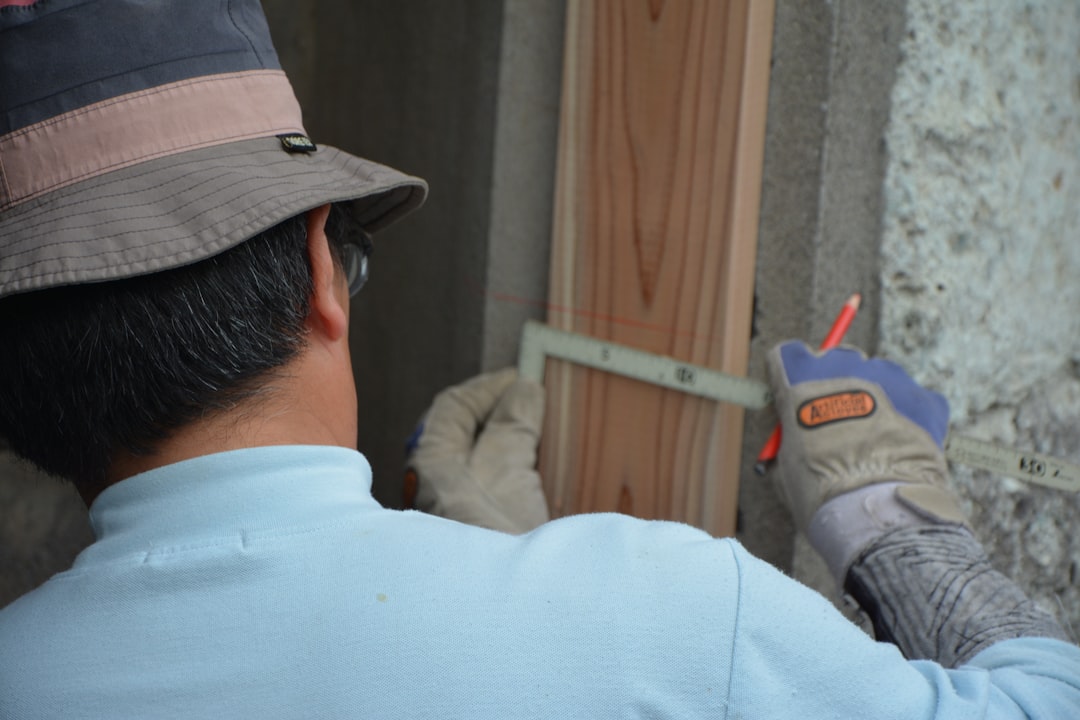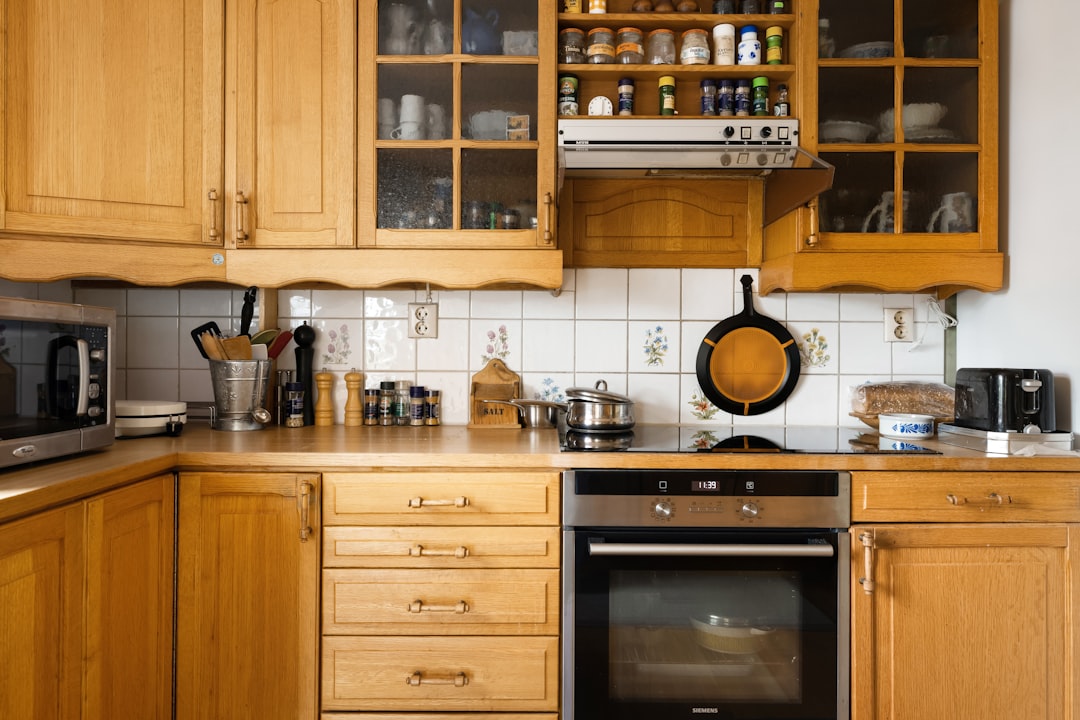

Engage prospects with a scan and streamline customer engagement with FREE QR code marketing tools by Sona – no strings attached!
Create a Free QR CodeFree consultation

No commitment

Engage prospects with a scan and streamline customer engagement with FREE QR code marketing tools by Sona – no strings attached!
Create a Free QR CodeFree consultation

No commitment
In today’s digitally driven world, QR codes have become a vital bridge connecting offline interactions to online engagement, offering home inspection services a powerful solution to evolving client expectations. Many firms face fragmented experiences: paper-based workflows that slow down responses, high-value prospects lost due to untracked offline actions, and a lack of data on marketing effectiveness. QR codes resolve these issues by moving potential clients from physical materials like flyers, appointment cards, and on-site signage directly to actions such as requesting quotes, accessing checklists, or exploring services.
This technology delivers measurable value for leaders in home inspection services by reducing friction and providing insights into which offline interactions drive conversions, a core aspect of offline attribution. In a competitive industry where every missed connection can result in lost business, QR codes simplify and enhance the client journey, streamline inquiries, and provide instant access to resources and information.
This guide provides practical strategies to make QR codes a key part of your home inspection workflow. Learn proven approaches to boost engagement, capture more qualified leads, and turn every scan into a data-driven opportunity to track, optimize, and demonstrate campaign ROI. Explore how leading teams use QR codes to modernize materials, identify anonymous prospects, and improve client experiences at each touchpoint, supported by Sona’s approach to account identification.

For many home inspection services, capturing leads at the right moment remains a constant challenge. Paper brochures and manual sign-up processes often leave high-intent prospects untracked, and slow data collection reduces close rates. QR codes create a seamless path from offline interest to actionable online engagement, minimizing paperwork and enabling real-time lead capture.
The key is to replace analog processes with digital actions that require only a scan. Instead of handing out a multi-page brochure at an open house, guide visitors to a mobile-optimized page for instant price ranges, sample reports, and a request-a-quote form. Rather than asking clients to email or call to book, let them scan from a postcard, a door hanger, or a lawn sign and choose the earliest available time slot in your scheduling tool. These small shifts remove friction and dramatically increase the likelihood of conversion.
To unlock these benefits:
Analog processes like clipboards, manual sign-in sheets, and printed forms can be replaced with a single scan that pre-fills data and routes prospects into your CRM. Teams that modernize in this way typically see faster turnaround, fewer missed leads, and better attribution across print and field channels. Platforms like Sona QR make it simple to manage codes, redirect destinations, and analyze performance across campaigns.
You can bring this to life quickly by mapping your most common offline moments to the digital actions that matter most. For example, a code on a pre-inspection checklist can drive preparedness and reduce reschedules, while a code on a post-inspection summary can drive reviews and referrals. Over time, even small improvements to these moments compound into higher conversion rates and lower acquisition costs.

Home inspection providers struggle to turn in-person or print exposure into digital engagement. Signage, postcards, and handouts generate awareness, but without a direct path to action, many potential clients remain anonymous and never enter your CRM. This disconnect leads to missed opportunities and uncertainty about which tactics actually generate bookings or revenue.
QR codes close this gap by creating a clear bridge from offline touchpoints to measurable online actions. With one scan, prospects can reach the right page to check availability, request a quote, or view sample reports. Without requiring an app download, QR codes invite immediate interaction and allow your team to act on early intent signals, reducing the chance of losing momentum.
QR codes close this gap by allowing clients to:
Integrating QR codes at high-traffic offline touchpoints helps home inspection businesses identify decision-makers who might otherwise remain unknown. By connecting scans to your CRM and follow-up workflows, you enable smarter, more timely outreach that increases quote volume and shortens time to booking.

Home inspection services often struggle to link scattered client interactions or capture context behind each lead. Choosing the right QR code format makes the experience intuitive for the scanner and valuable for your business, since each format supports different actions and data capture.
For example, a vCard on a business card saves the inspector’s contact details instantly, reducing the chance that buyers or agents misplace the information. See how to share contact info with QR codes. A dynamic web link on open house signage can lead to a landing page that is updated weekly with new availability and seasonal discounts. A form QR on a postcard can pre-fill fields and route requests to the right territory or inspector to speed response time. If you use forms, consider a Google Forms QR.
Common formats include:
Platforms that support both static and dynamic codes let teams experiment with formats and destinations, then scale what works. Sona QR centralizes code creation, redirects, and analytics, which is especially useful when running multiple campaigns across different neighborhoods, broker offices, or event partners.

Growth in home inspection services depends on acting when intent is highest. Many companies lack visibility into which offline moments influence the buyer’s journey: someone may pick up a flyer at an open house or flip through an inspection report at closing, yet never take the next step to hire you. Without a measurable path to action, these moments vanish.
Strategic QR code placement bridges this gap by turning each physical asset into a conversion opportunity. Focus on locations and materials that already get attention, then make the next step obvious and immediate. By tagging each code uniquely, you can see which neighborhoods, agents, or properties generate qualified interest and concentrate efforts where returns are strongest.
Potential placements include:
Prioritizing codes in high-traffic areas and syncing scan events with your CRM ensures key prospects get tracked, routed, and nurtured. Over time, the data shows which placements deserve more budget, which messages resonate, and where to test new calls to action for incremental gains.
Traditional lead generation often means waiting for clients to call or email, which introduces delays and creates drop-off. Many firms discover that interested prospects remain anonymous after seeing a sign or brochure, limiting the ability to follow up and close the loop.
QR codes shift the balance by letting prospects act in the moment. Whether someone is at an open house, on the sidewalk, or reviewing a report at home, a scan can trigger the next step in your sales process. These use cases also layer in analytics so you can identify where interest concentrates and which messages push people from browsing to booking.
QR codes facilitate:
These three examples align to core business goals: better show-up rates, higher quote volume, and increased lifetime value through referrals and add-on services. By optimizing each moment with a simple scan, you remove friction and capture more demand.
Many home inspection firms struggle to identify which channels bring in valuable clients and which attract low-intent browsers. Anonymous interactions make it tough to create audience segments for targeted nurturing. QR codes help by capturing intent signals that you can map to lifecycle stages and follow up with tailored messages.
Each scan reveals context: where the person was, what asset they scanned, and which action they chose next. By deploying multiple QR codes across your offline footprint, you can group scanners by goal and readiness to buy. For example, someone who scans a pre-inspection checklist is already deeper in the funnel than someone who scans a generic brochure at an open house.
Modern strategies enable businesses to:
Industry-specific distinctions make segmentation more precise. For home inspection services, useful cohorts include first-time buyers vs. investors, homeowners preparing to sell vs. buyers under contract, and real estate agents evaluating preferred vendors. A client who scans a QR code embedded in an inspection report might be ideal for cross-sell offers like re-inspections, specialized tests, or seasonal maintenance checkups.
Home inspection services often find it difficult to connect offline and online marketing, which makes attribution hard and budget optimization guesswork. QR codes act as connectors across print, field, and digital channels by embedding measurable actions into physical assets and events.
When every piece of collateral includes a scannable path to a specific action, you get both engagement and data. You see which neighborhoods, partner offices, or mail routes produce quote requests and which produce only casual browsing. With this insight, you can adjust copy, offers, and placements instead of relying on intuition.
Here is how QR codes enhance your broader strategy:
With a centralized platform like Sona QR, you can manage codes for all channels, monitor performance in one dashboard, and sync scan data with your CRM for automated follow-up. This connected workflow turns offline interest into pipeline and makes optimization a continuous process rather than a quarterly guess.
Launching QR campaigns can be complex if you do not have a clear plan. Confusion over the right destinations, lack of testing, or poor placements can slow momentum. A simple, repeatable process ensures your first campaigns deliver results and that you can scale with confidence.
Start by choosing a use case that aligns with a measurable business outcome. In home inspection services, typical outcomes include increasing quote requests, boosting booking conversion rates, improving pre-appointment readiness, and capturing more reviews or referrals. Then select the QR code type, design for scannability, and deploy where your audience already looks.
Clarify the main challenge you want to solve and pick a QR deployment that maps directly to it. If your team struggles with slow bookings, prioritize a code that opens a scheduling page with real-time availability. If you need more referrals, direct scanners to a streamlined review and share flow.
Choose whether you need a static or dynamic code. Static codes are fine for fixed content like a brochure PDF. Most revenue-focused campaigns benefit from dynamic codes because you can edit the destination and gather richer analytics.
Make the QR easy to notice, easy to understand, and easy to scan. A strong visual frame, concise copy, and device testing prevent the most common pitfalls.
Roll out codes on the materials and locations your clients already use. Start with a handful of high-visibility placements so you can compare performance and learn quickly.
Measure performance from scan to revenue and treat each code as an experiment. Use insights to refine creative, placement, and offers.
A major challenge in home inspection marketing is connecting offline and online interactions to revenue. Multi-touch attribution often breaks down when print or in-person moments are not tied to digital identities. Without closing this loop, it is hard to justify spend or improve campaigns.
End-to-end QR analytics solve this problem by capturing real-world engagement and linking it to outcomes in your CRM. The goal is not just to count scans, but to see how those scans correlate with quote requests, bookings, average order value, and repeat business. With a measurement-first mindset, inspection teams move from guesswork to accountable, results-focused marketing.
With Sona QR and Sona.com, you can:
The result is a unified view of how physical assets drive digital outcomes. When a yard sign scan turns into a quote request, then a booking, and eventually a referral, you see the full chain and can replicate the playbook across markets.
A QR strategy can stall without ongoing refinement. Common pitfalls include generic calls to action, neglected analytics, or placements that are hard to scan. The most successful teams treat QR codes as living assets that they test and update frequently.
Focus your efforts on the media your audience already interacts with and align each scan with a clear benefit. For example, homeowners value convenience and clarity, while agents value speed and reliability. Tailor calls to action accordingly, and train staff and partners to invite scanning at the right moment.
To avoid mistakes and scale wins:
A creative idea for this industry is to place QR codes on “Just Inspected” signage at properties you have worked on. Passersby can scan to access a sample report or a pre-qualification checklist, capturing fresh leads from buyers and agents who rarely fill out generic forms.

Some home inspection teams hesitate to adopt new tools due to ROI concerns or integration challenges. The data, however, shows that QR codes reveal new prospects, convert more quality leads, and provide accurate reporting that guides smarter investment.
Real-world outcomes illustrate the potential. When you give high-intent buyers a faster path to action and you capture that behavior in your systems, conversions follow. Better still, QR-enabled workflows reduce manual work and make attribution clearer for leadership.
Use these examples to inspire your own tests. Try co-branded QR codes with brokerage partners, a seasonal maintenance checklist linked from direct mail, or a post-inspection “Scan to Refer a Friend” card that simplifies word-of-mouth.
Poor QR code deployment can worsen pain points if you are not careful. Low engagement often stems from unclear calls to action, inaccessible placement, or outdated content. The fix is to make each code purposeful, scannable, and maintained over time.
Treat each QR as a micro product: it needs a clear promise, a reliable experience, and a measurable outcome. Take time to test in realistic conditions and review analytics weekly, at least during the first month of a campaign. Continuous improvement compounds results.
QR codes are transforming home inspection services by converting previously anonymous or disconnected offline touchpoints into measurable, actionable steps in the client journey. By making every interaction trackable, from initial flyer scans to post-inspection follow-ups, companies address industry pain points like delayed lead capture, low attribution clarity, and missed upsell or referral chances.
Modern QR tools like Sona QR and Sona.com allow businesses to enrich CRM data, identify hidden decision-makers, and attribute revenue to every campaign. These approaches empower home inspection teams to maximize value from every contact, move past missed opportunities, and build lasting competitive advantages in a digital-first environment. If you are ready to get started, generate and track your first codes with Sona QR, connect scan data to your CRM, and turn everyday touchpoints into conversions you can measure and grow. Start creating QR codes for free.
QR codes have revolutionized home inspection services by transforming traditional reports and marketing materials into interactive, measurable engagement tools. Whether it’s streamlining customer acquisition, enhancing client communication, or providing instant access to detailed inspection data, QR codes elevate the entire inspection experience—turning static documents into dynamic conversion drivers. Imagine your clients instantly accessing comprehensive reports, scheduling follow-ups, or requesting additional services with a simple scan, all while you track engagement and optimize your outreach in real time.
With Sona QR, creating dynamic, trackable QR codes tailored for home inspection services is effortless. Update your campaigns on the fly without reprinting, connect every scan directly to actionable insights, and see exactly how your efforts translate into booked inspections and satisfied customers. No more guesswork—just smarter, data-driven growth.
Start for free with Sona QR today and turn every scan into a new opportunity to grow your home inspection business.
The home inspection process involves scheduling the inspection, preparing with checklists, conducting the inspection to assess property condition, delivering a detailed report, and following up for questions or referrals.
Choose a reputable home inspection service by looking for providers who offer clear communication, detailed and timely reports, use modern tools like QR codes for efficient scheduling and follow-up, and have positive reviews or referrals.
A home inspection report should provide a comprehensive, easy-to-understand summary of property conditions, include digital access via QR codes for review and sharing, and offer recommendations for repairs or maintenance.
The article does not specify exact costs for home inspection services, but QR code technology can help services provide instant price ranges and personalized estimates to prospects.
QR codes streamline the client journey by enabling instant access to scheduling, quotes, checklists, and reports; improve lead capture and tracking; reduce paperwork; provide measurable data for marketing optimization; and increase conversion rates.
QR codes replace manual processes with instant digital actions from offline materials, capturing high-intent leads in real time, reducing missed opportunities, and routing prospects directly into CRM systems for faster follow-up.
Common QR code formats include web links for scheduling and information, vCards for contact sharing, forms for quote requests, dynamic codes for editable destinations, and SMS or email templates for quick communication.
Effective placements include open house signage and flyers, appointment cards, direct mail, inspection trucks, reports, and partner event materials to capture attention and drive conversions.
QR codes link offline touchpoints to online actions, enabling tracking of scans by location and asset, syncing data with CRM systems, and attributing revenue to specific campaigns for data-driven marketing decisions.
Successful strategies include choosing clear goals, selecting appropriate QR code types, designing for visibility, deploying on high-traffic assets, tracking analytics, A/B testing, automating follow-up, and continuously optimizing based on data.
Use Sona QR's trackable codes to improve customer acquisition and engagement today.
Create Your FREE Trackable QR Code in SecondsJoin results-focused teams combining Sona Platform automation with advanced Google Ads strategies to scale lead generation

Connect your existing CRM

Free Account Enrichment

No setup fees
No commitment required

Free consultation

Get a custom Google Ads roadmap for your business






Launch campaigns that generate qualified leads in 30 days or less.
